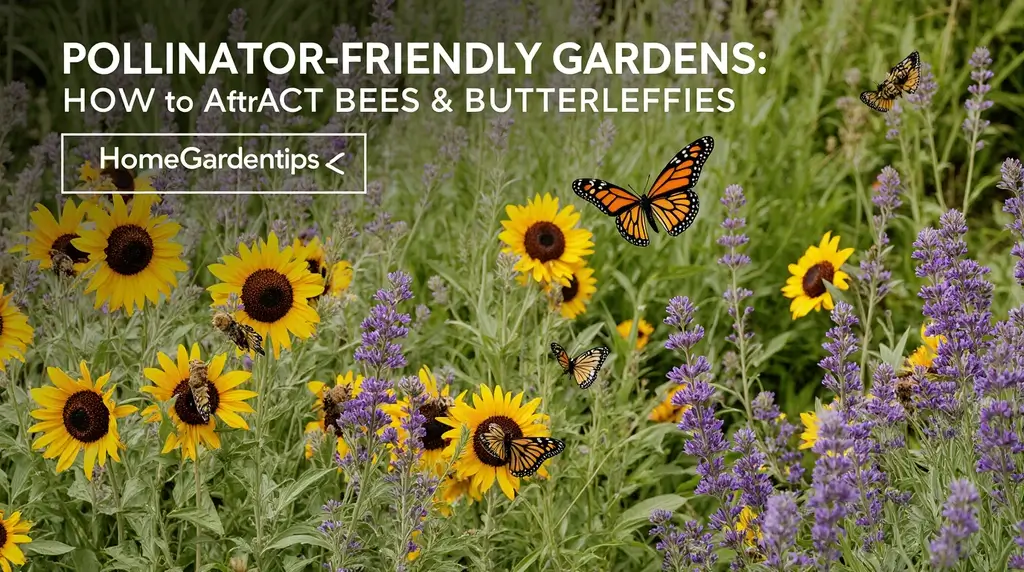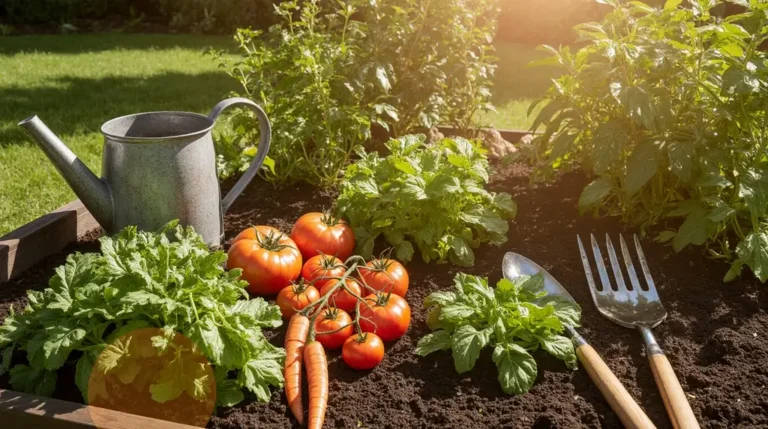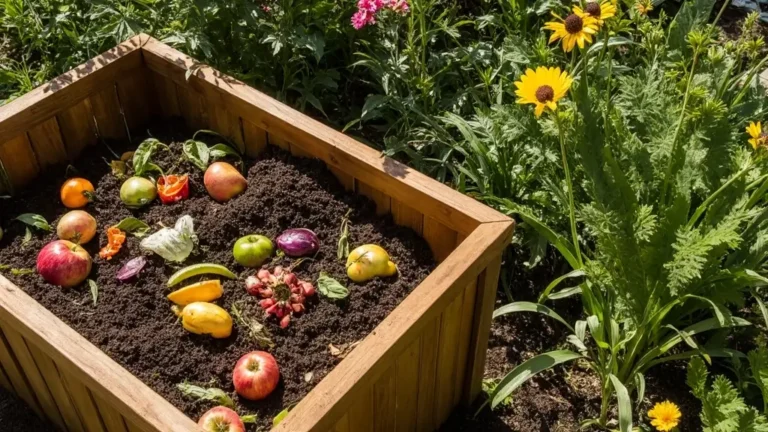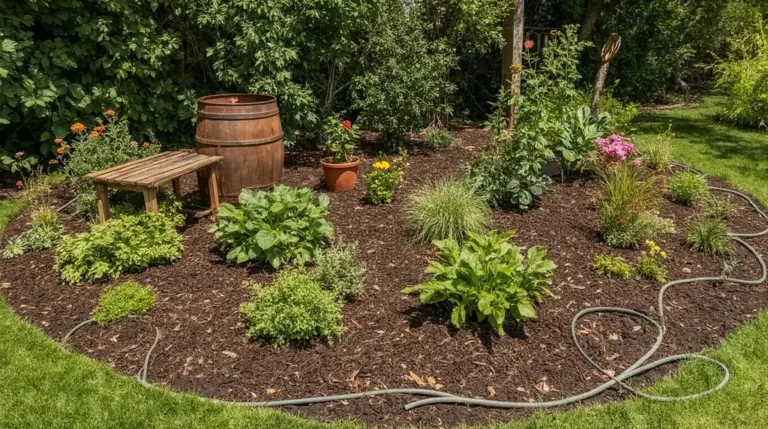Pollinator Friendly Gardens: How to Attract Bees & Butterflies
Table of Contents
Introduction: Why Your Small Space Matters
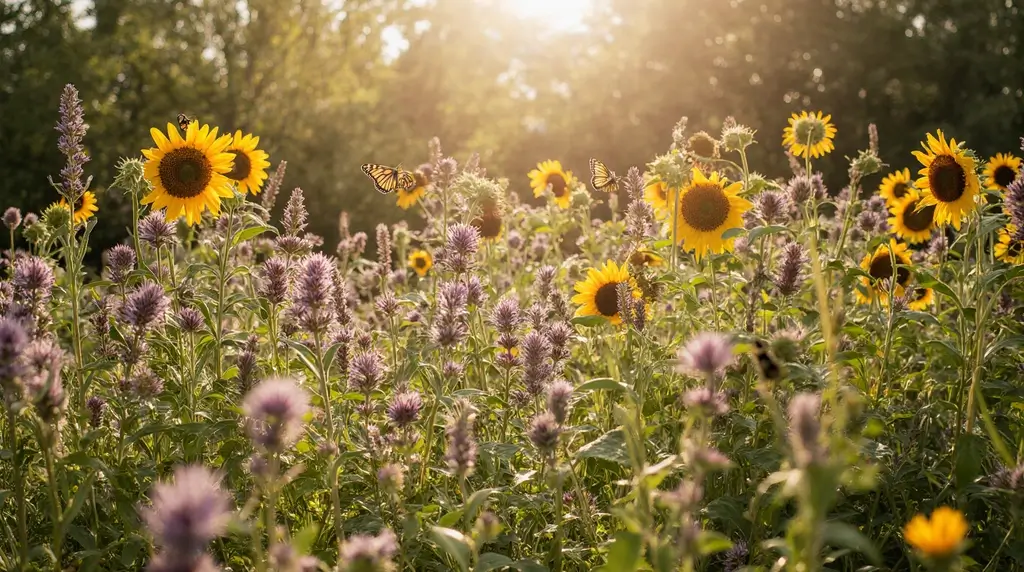
Picture this: you’re sipping your morning coffee when a bee lands delicately on the lavender outside your window, its legs heavy with golden pollen. That simple moment represents something profound—your small garden space is making a real difference in supporting our planet’s essential pollinators. Whether you have a sprawling backyard or just a modest balcony, creating pollinator friendly gardens can have a meaningful impact on local ecosystems and beyond. Take your eco-friendly gardening to the next level with our exclusive product designed to support Sustainable & Organic Gardening—perfectly aligned with this article. get more about Organic Vegetable Gardening;
The stakes couldn’t be higher. Pollinators play a vital role in food and flower production locally and globally, with insect pollination adding more than $34 billion in economic value to U.S. agricultural crops annually. These tiny workers support one out of every three bites of food we consume, making wildlife-friendly gardening not just an environmental choice, but an economic imperative.
Creating a successful pollinator garden doesn’t require guesswork. Experts agree that supporting pollinator health involves four fundamental pillars: providing reliable food sources, accessible water, protective shelter, and reducing harmful pesticides. Let’s explore how you can transform your outdoor space into a thriving sanctuary that will attract bees and butterflies throughout the growing season.
Pillar 1: The Foundation – Selecting the Right Plants (Food Source)
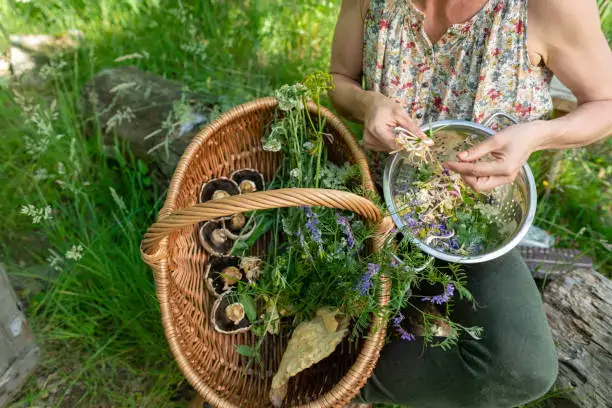
Native vs. Nativar vs. Cultivated: Making the Best Choices
The foundation of any successful pollinator garden lies in plant selection, and understanding the differences between native, nativar, and cultivated varieties can make or break your garden’s success.
The Native Advantage
Millions of years of evolution have created perfect partnerships between native plants and local pollinators. These relationships run deeper than simple nectar provision—caterpillars specifically need native plants as host plants for their survival. Consider native oaks, which support over 500 butterfly species throughout their lifecycle. This demonstrates why native plants form the backbone of effective wildlife-friendly gardening.
The Balanced Approach
A good guideline for optimal pollinator support is to plant about 70% native or nativar species and up to 30% cultivated, non-native varieties. This balance ensures you’re providing maximum ecological benefit while still enjoying garden variety and extended bloom times.
Understanding Nativars
A nativar is a cultivated variety of a native plant, often bred for specific traits like extended flowering time, improved disease resistance, or enhanced bloom color. While they maintain many benefits of their native parents, it’s crucial to select nativars that still provide accessible pollen and nectar for pollinators.
Crucial Plant Selection Criteria
When selecting plants for your pollinator garden, keep these guidelines in mind:
- Choose single flowers over doubles, as they provide better pollinator access to pollen and nectar
- Select plants with green foliage rather than dark or heavily variegated leaves, which typically offer more ecological benefits
- Always choose varieties suited to your site’s specific conditions including sunlight exposure, soil type, and hardiness zone
- Prioritize nativars that maintain their pollinator-supporting characteristics
Ensuring Year-Round Food Supply and Eliminating Bloom Gaps
The Seasonal Imperative
Creating pollinator friendly gardens requires strategic planning to ensure continuous food availability. Your goal should be a garden that blooms across at least three seasons—early spring, summer, and fall—providing uninterrupted nourishment for visiting pollinators.
Addressing Spring’s Critical Period
Early spring presents the most crucial challenge for pollinator support. Bees, butterflies, and other beneficial insects emerging from winter hibernation desperately need immediate food sources. Without adequate early-season nutrition, entire pollinator populations can struggle throughout the growing season.
Bridging the Summer Gap
Many gardens suffer from a “boom-bust” cycle, with abundant spring blooms followed by sparse summer flowering. Generic plant lists often fail to address this gap, making strategic selection essential for transforming your garden into a consistently abundant food source.
Key Pollinator-Specific Plants
Monarch Host Plants: The foliage of milkweed species (Asclepias spp.) serves as the exclusive food source for Monarch butterfly caterpillars, making these plants absolutely essential for Monarch conservation.
Early Spring Support: Don’t overlook humble dandelions—they’re critically important for honey bees, mason bees, and native bee species emerging in early spring. Broadleaf evergreens like Boxwood, Hollies, and Oregon Grape provide vital early-season flowers when little else is blooming.
Season-Long Champions: Include reliable performers like Bee Balm (Monarda fistulosa), Purple Coneflowers (Echinacea), Sunflowers, Zinnias, and Lavender. Native grasses like Little Bluestem provide both food and nesting materials while maintaining an attractive, structured appearance.
Pillar 2: Water and Shelter – Building a Complete Habitat
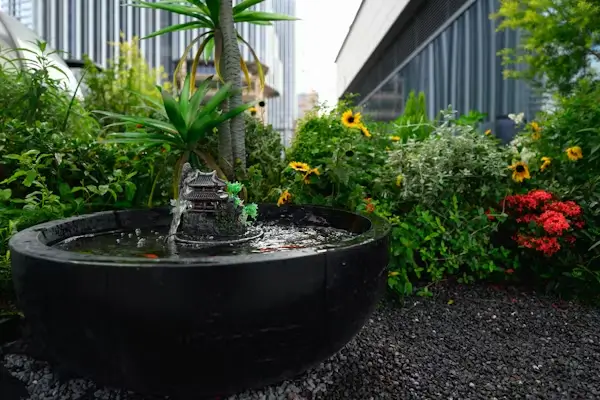
Providing Safe Water Sources
Water features don’t need to be elaborate to attract bees and butterflies—even the simplest setup can become a vital resource. A shallow dish or saucer can provide essential hydration for pollinators while adding visual interest to your garden.
DIY Bee Bath Instructions:
- Select a shallow dish or saucer, ideally 1-2 inches deep
- Add stones, pebbles, or wine corks to create stable landing spots and perching areas
- Position in a sheltered, partially shaded location to keep water cool and reduce evaporation
- Change water daily to prevent mosquito larvae development
- Clean thoroughly weekly using hot water and mild, non-citrus dish soap
Creating Protection and Nurseries (Shelter)
Diverse Shelter Needs
Different pollinators require different types of shelter and protection. Hoverflies lay eggs in grass clippings, butterflies seek shelter under large leaves like Hostas, and hummingbirds nest in dense foliage provided by shrubs like Nannyberry or tall Weigela varieties.
Stumperies and Natural Debris
Encourage solitary bees, beneficial beetles, and wasps by creating a “stumpery”—a collection of old stumps, branches, and twigs that provide shade, moisture retention, and protective shelter. This wildlife-friendly gardening technique supports the 70% of bee species that nest in the ground or in wood cavities.
Embracing Strategic “Messiness”
Keep as much clean, healthy organic material on-site as possible. Leaf litter supports multiple life stages of moths, bees, and butterflies while enriching soil structure and fertility. This approach challenges traditional tidy gardening but proves essential for comprehensive pollinator support.
Achieving Aesthetic Balance
For gardeners concerned about appearance, plant in groups of 3, 5, or 7 for visual impact while leaving space between groups for structural definition. Choose clump-forming plants like Little Bluestem or Cardinal Flower, which maintain neater, more upright habits than sprawling varieties.
Winter Care for Pollinators
Many beneficial insects rely on garden plant material for overwintering survival, living in leaf litter and hollow stems. Resist the urge to clean up everything in fall—instead, leave stems standing and maintain leaf cover in designated areas.
Evergreens such as Boxwood, Hollies, and Oregon Grape provide reliable windbreaks that keep pollinators warm through harsh winter months while offering early spring blooms when they emerge.
Pillar 3: Maintenance – Organic Pest Management and Lawn Reduction
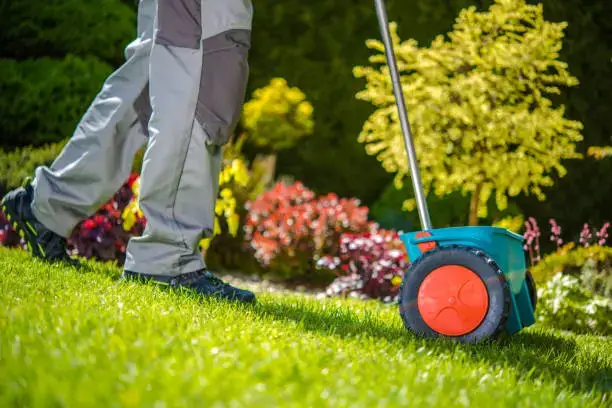
Implementing Integrated Pest Management (IPM)
Supporting pollinator health requires dramatically reducing or eliminating pesticide use in your garden. Integrated Pest Management programs use comprehensive information about pest life cycles and environmental interactions to manage pest damage through economical means with minimal hazard to people, property, and the environment.
Organic and Natural Methods
- Avoid synthetic fertilizers and pesticides entirely within your pollinator garden
- Use natural controls like neem oil-based products for pest management
- Hand-pick larger pests such as cucumber beetles and Japanese beetles
- Encourage beneficial insects like Hoverflies, whose larvae can consume up to 400 aphids each
- Welcome wasps, which naturally manage pests like tomato hornworms
Creating Pesticide-Free Zones
Establishing completely pesticide-free areas empowers pollinators to thrive without chemical interference. Even organic pesticides can harm beneficial insects, so use them sparingly and only when absolutely necessary.
Strategies for “Deleting the Lawn”
As native vegetation gets replaced by manicured lawns, pollinators lose essential food and nesting sites. Reducing lawn area represents one of the most impactful changes you can make for wildlife-friendly gardening.
Effective Lawn Reduction Methods:
Sod Kicking: Renting a sod kicker provides immediate results for smaller areas, though it’s physically demanding work that generates large amounts of displaced sod.
Sheet Mulching (Cardboard Method): This gentler approach involves laying cardboard over existing lawn in spring, covering with mulch, then digging holes through the cardboard to plant plugs in fall. This method requires less labor and avoids sod disposal challenges.
“No Mow May”: Simply allowing lawn areas to grow freely during May creates habitat rich in essential food and shelter resources when pollinators need them most.
Pillar 4: The Unsung Heroes – Recognizing Lesser-Known Pollinators
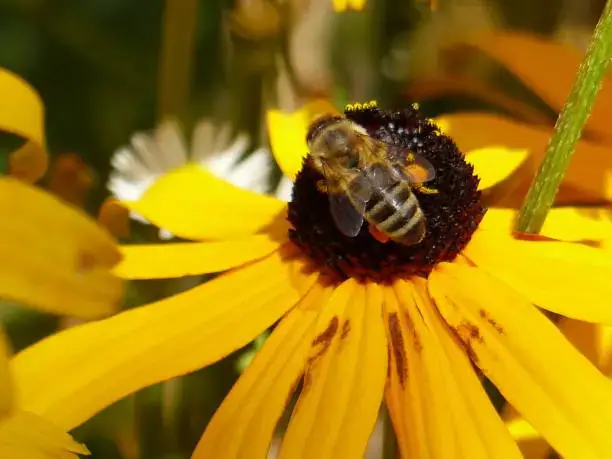
While bees and butterflies capture most attention, successful pollinator friendly gardens support diverse wildlife communities including often-overlooked but essential species.
Hoverflies: These bee mimics serve dual roles as effective pollinators and pest controllers. Their larvae consume vast quantities of aphids while adults pollinate flowers with remarkable efficiency.
Moths: These “night-shift pollinators” match bees and butterflies in pollination effectiveness. Attract them by planting fragrant, night-blooming flowers in white, pale yellow, or iridescent shades such as Moonflowers and Night-blooming Primrose.
Beetles: As some of our oldest pollinators, beetles remain essential for ancient plants like magnolias, pawpaws, and goldenrods. The colorful Milkweed Beetle exemplifies how these insects combine pollination services with striking garden beauty.
Wasps: Far from being mere pests, wasps provide invaluable services both as pollinators and natural pest controllers, helping maintain garden balance without chemical intervention.
Conclusion: Making a Difference, One Garden at a Time
Creating pollinator friendly gardens represents more than just aesthetic gardening—it’s about fostering balanced, welcoming environments that support essential wildlife throughout the year. By thoughtfully incorporating diverse plant selections, natural habitat features like water sources and shelter, and organic maintenance practices, you simultaneously enrich your garden’s beauty and ecological health.
Your efforts to attract bees and butterflies ripple outward, supporting local food webs, contributing to agricultural productivity, and helping maintain the delicate relationships that sustain our natural world. Every flower you plant, every pesticide you avoid, and every wild corner you preserve makes a meaningful difference.
Next Steps and Regional Resources
Building successful pollinator gardens often requires region-specific knowledge. Sourcing native seeds can prove challenging, making local Native Plant Societies invaluable resources for guidance and plant materials.
Consult authoritative organizations like the Xerces Society, Pollinator Partnership, and regional extension offices such as WSU Extension or OSU Extension for region-specific plant lists and expert guidance tailored to your local conditions.
Consider joining citizen science efforts like the Bumble Bee Atlas to contribute valuable data while learning more about your local pollinator communities. Together, we can create a network of wildlife-friendly gardening spaces that support thriving ecosystems for generations to come.
Pollinator Friendly Gardens: How to Attract Bees & Butterflies
Picture this: you’re sipping your morning coffee when a bee lands delicately on the lavender outside your window, its legs heavy with golden pollen. That simple moment represents something profound—your small garden space is making a real difference in supporting our planet’s essential pollinators. Whether you have a sprawling backyard or just a modest balcony, creating pollinator friendly gardens can have a meaningful impact on local ecosystems and beyond. Take your eco-friendly gardening to the next level with our exclusive product designed to support Sustainable & Organic Gardening—perfectly aligned with this article. get more about Organic Vegetable Gardening;

